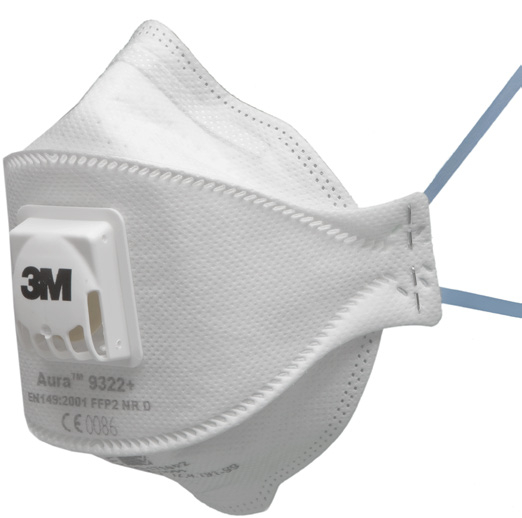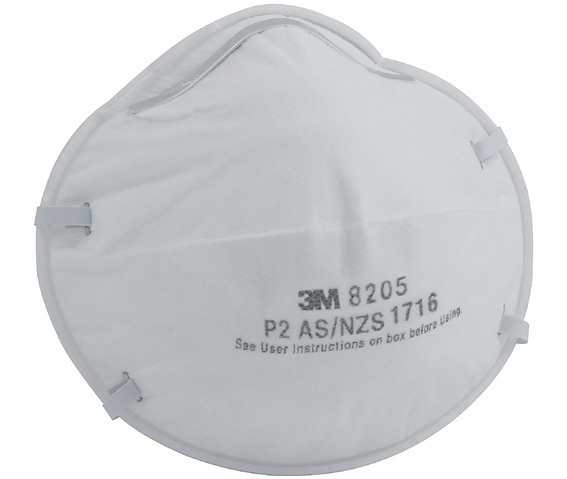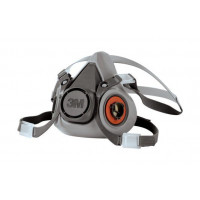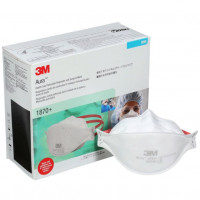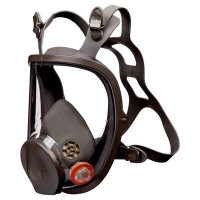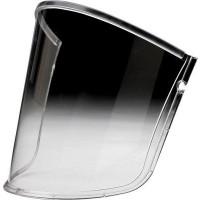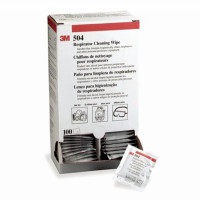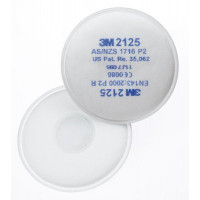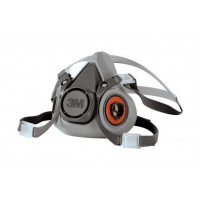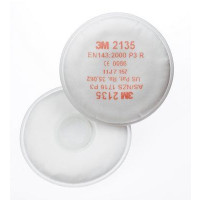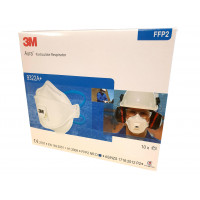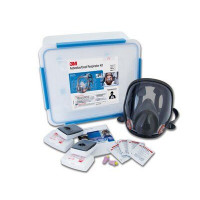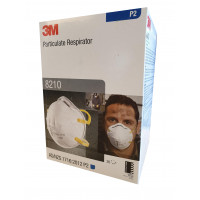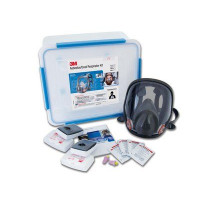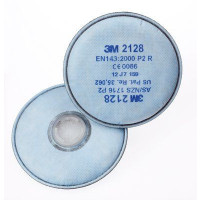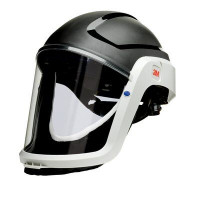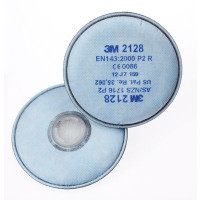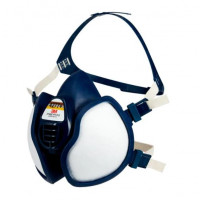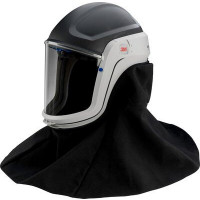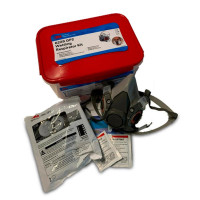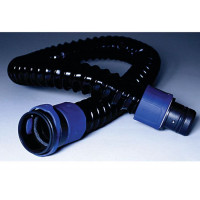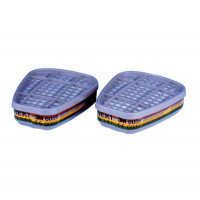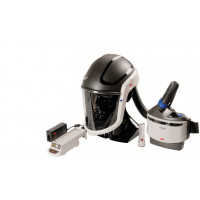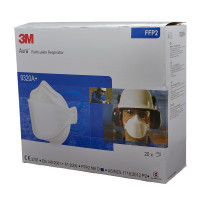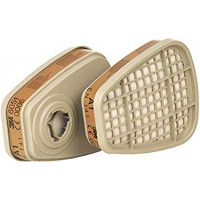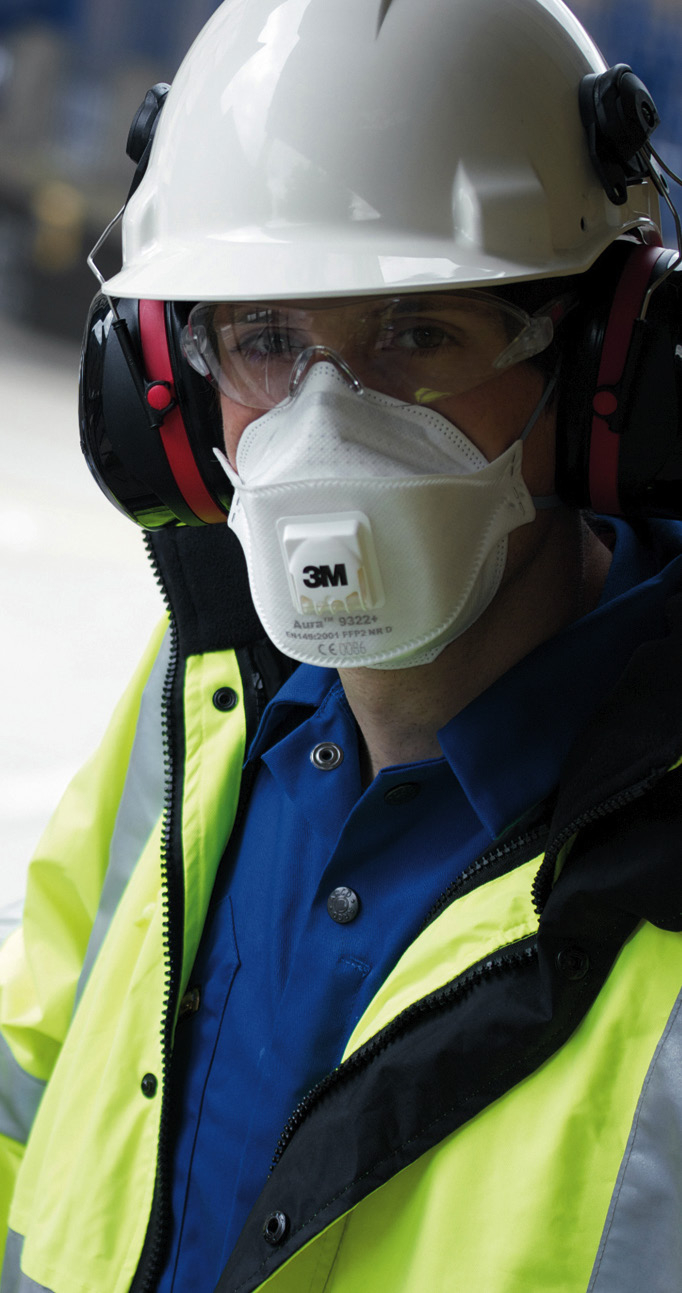
Step 1: Choose a Protection Factor
P1
P1 is the rating given to a respirator which meets AS/ NZS1716:2012 for filtering mechanically generated particles, e.g., particles formed by crushing, grinding, drilling, sanding and cutting.
P2
P2 is the rating given to a respirator that meets AS/NZS1716:2012 for filtering mechanically and thermally generated particles, e.g. welding fumes, bushfire smoke. Also for use against bio aerosols such as H1N1 and H5N1 Influenza.
Type GP1 / Type GP2
Type ‘G’ class rating is suitable for low vapour pressure (below 1.3Pa @ 25oC) organic compounds e.g. many agricultural chemicals like herbicides and pesticides.
N95
Reduces exposure to harmful airborne particles <100 micron eg. Bacillus anthracis, Mycobacterium tuberculosis, mould, SARS/Influenza virus.
Step 2: Choose a Valved or Unvalved Respirator
|
|
Valved Respirator Benefits
|
|
|
Unvalved Respirator Benefits
|
Step 3: Choose a Style
You can choose from the following models to suit your environment and your face shape:

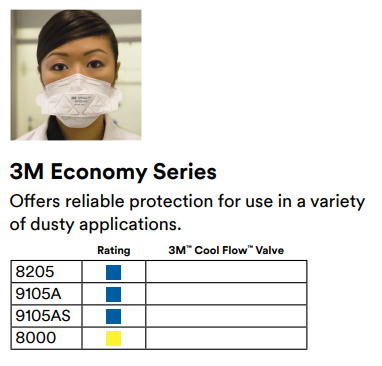
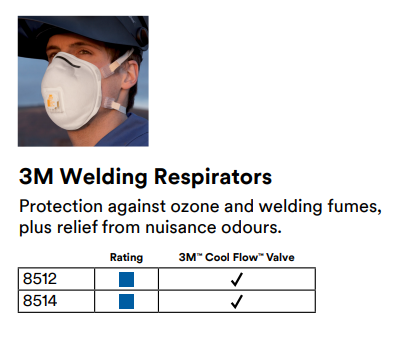

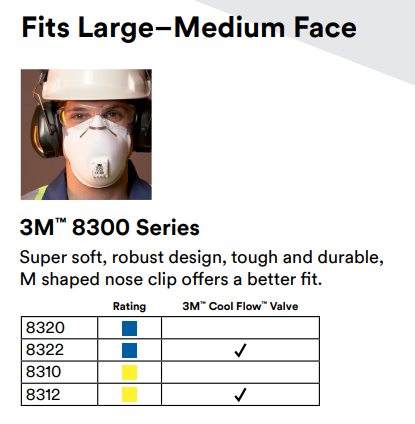
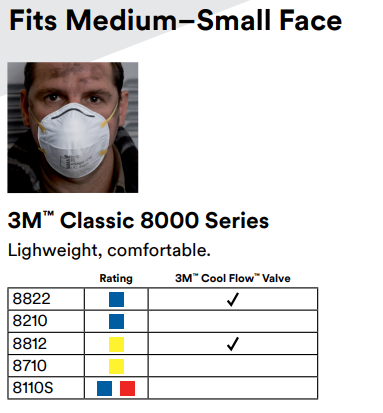
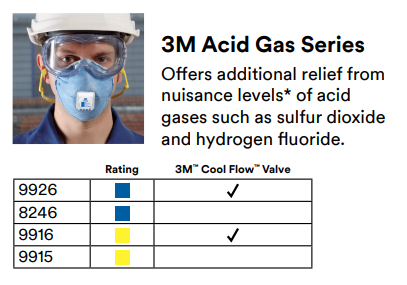

Step 4: Fit Test
A respirator cannot protect you if it does not fit your face
Best practice for any Personal Protective Equipment is to ensure the right fit.
- Proper fitting of a respirator requires the application of an accepted method of fit testing.
- It is recommended that wearers be fit tested in accordance with Standards Australia’s Guidance document AS/NZS 1715:2009.
-
3M Medium Standard Half Face Respirator (6200)
Regular Price: $39.95
NOW: $34.95
-
-
SMALL 3M Full Face Mask Reusable Respirator 6700 Respiratory Protection
Regular Price: $359.95
NOW: $339.95
-
-
3M P2 N95 9322A+ Respirator Aura Flat Fold Mask with valve- PK 10
Regular Price: $74.95
NOW: $69.95
-
3M Medium Full Face Respirator Kit Asbestos/Silica/Dust - P3 (6835M)
Regular Price: $404.95
NOW: $379.95
-
3M P2 Cupped Particulate Respirator (8210) PK=20
Regular Price: $49.95
NOW: $44.95
-
3M Large Full Face Respirator Kit Asbestos/Silica/Dust - P3 (6835L)
Regular Price: $404.95
NOW: $379.95
-
3M GP2 Particulate, Ozone & Nuisance Level OV/AG Disc Filter (2128/10)
Regular Price: $29.95
NOW: $24.95
-
-
3M GP2 Particulate, Ozone & Nuisance Level OV/AG Disc Filter (2128)
Regular Price: $29.95
NOW: $24.95
-
-
-
-
3M Versaflo Standard Duty Breathing Tube, BT-20L (Long) PAPR
Regular Price: $139.95
NOW: $129.95
-
3M A1B1E1K1 Multi Gas Cartridge Filter (6059)-Pk 2
Regular Price: $44.95
NOW: $39.95
-
-
3M P2 Aura Particulate Respirator (9320A+) - PK-20
Regular Price: $69.95
NOW: $64.95
-
-



